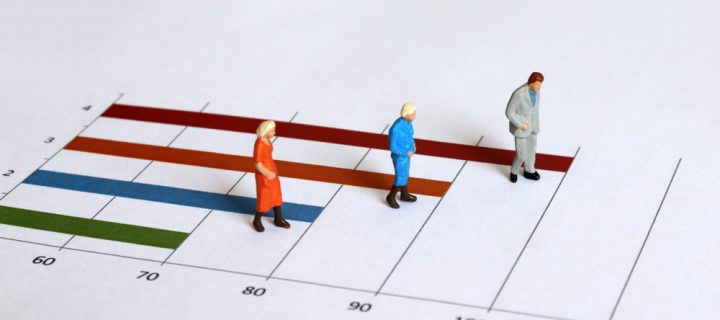Hispanic Americans have been hit three times harder than their White counterparts.
The novel coronavirus is tiny. It’s hard to imagine but SARS-CoV-2 is estimated to have a diameter of somewhere between 60 and 140 nanometers (nm), which is infinitesimally smaller than one of your red blood cells but actually larger than some particles of dust and gas. Nonetheless, it’s impact has obviously been sizable.
In the US, for example, the virus’ power is so large that it actually shortened the life expectancy of Americans in 2020. Stunningly, a study done at the University of Southern California found the virus caused life expectancy for Americans to become shorter by 1.13 years, on average.
Related: Why Does the World Have Viruses?
(People in the US are now estimated to live to be approximately 77.48 years of age). This might sound like a small change, but it’s significant. The dip marks the largest decline in American’s life expectancy during the last 40 years. It’s also the lowest life expectancy on record in the US since 2003.
So it all sounds bad, but how has it all played out? Have all people been hit equally? Far from it. The discrepancies can be shocking. Take a look.
Latinx Populations
All stories of suffering are sad. Some of the worst, however, are now being found in the Latinx populations across the US as they are hit head on by COVID-19. Prior to the pandemic, studies showed people of Latin descent in the US were in some of the best health, compared with White and Black Americans. The chronic conditions many Blacks and Whites suffer from were not found at such high rates among Latinx people. It comes as somewhat of a surprise then, that this group has been hit the hardest by COVID-19.
“The huge decline in life expectancy for Latinos is especially shocking,” said Noreen Goldman, a professor of demography and public affairs at the Princeton School of Public and International Affairs. “The generally good health of Latinos prior to the pandemic, which should have protected them from COVID-19, has laid bare the risks associated with social and economic disadvantage.”
Related: What Can Convalescent Plasma Do For You?
The life expectancy of Latinx people in the US during 2020 dropped by just over 3 years and now sits at 78.77 years of age. The study authors say part of the reason this group has experienced such a large drop is because more Latinx people have died from COVID-19 at younger ages, compared with Blacks and Whites. More Latinx people who may not have considered themselves to be in high risk groups have ended up dying from the virus. Why? That has yet to be unveiled.
To add insult to injury, according to data from Pew Research Center, Latinx people have also experienced some of the largest pay cuts during the pandemic. About 27% of all Americans said they had reduced income due to the pandemic as of last May, compared with 40% of Latinos.
Gap Between Blacks and Whites Widens
The novel coronavirus knows no boundaries. In the US, Whites experienced a decline in life expectancy of less than one year (0.68 years). Blacks, in contrast, had their life expectancy shortened by 2.10 years. This gap is expected to continue growing. Experts say they expect COVID-19 to increase the gap in life expectancy between Blacks and Whites by over 40% by the time this is all done. It’s projected that Whites will now generally live 5 years longer than blacks in the US, up from 3.6 years before the pandemic began. The study authors say they are now looking at occupational exposures to COVID-19 by race and ethnicity. This is to try to find out exactly why certain groups have been hit so much harder than others.
Support Needed for Those Who Don’t Think They’re at Risk
In a way, we are still doing better than those who have come before us, however. Research shows the flu pandemic of 1918-1920 reduced life expectancy by somewhere between seven and twelve years. Those are staggering numbers. And marginalized populations at the time could have had it even worse. Theresa Andrasfay, who is a postdoctoral fellow at the USC Leonard Davis School of Gerontology, is attributing the disproportionate suffering of Black and Latinx Americans to various factors. These include greater exposure to COVID-19 at work and at home, and being on the receiving end of poorer health care. It all points to the extreme need for more support to be given to these populations during the pandemic (and after it). A specific focus needs to be given to younger people who do not think they will die from COVID-19, Andrasfay said.
Is someone you are close to sick or testing positive for COVID-19? Follow this advice from the CDC to help stay safe.
photo credits: Hyejin Kang/Shutterstock.com












